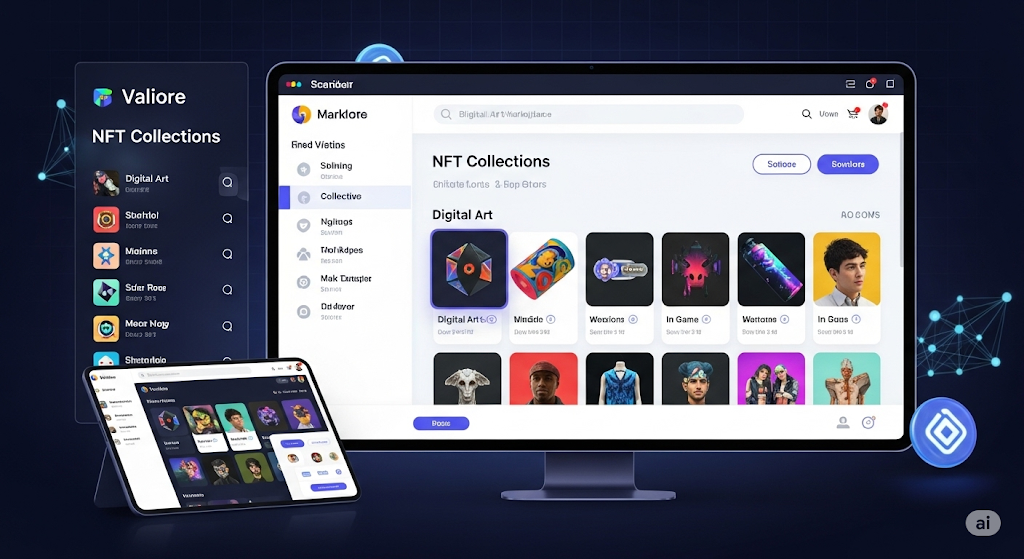The dream of financial freedom – a life where your money works for you, rather than you constantly working for money – often seems elusive. For years, I was trapped in the cycle of trading time for income, believing that working harder was the only path to prosperity. It wasn’t until a personal crisis forced me to re-evaluate everything that I discovered the transformative power of passive income. Building streams of income that flow regardless of my direct daily effort didn’t just change my finances; it fundamentally altered my relationship with work, time, and security. Exploring passive income ideas became not just a financial strategy, but a pathway to a more resilient and fulfilling life.
This article delves into the world of Alternative income ideas, moving beyond get-rich-quick schemes to explore sustainable strategies for building long-term wealth and achieving genuine financial independence. We’ll define what true passive income entails, explore diverse avenues like dividend investing, real estate, digital assets, and automated businesses, and discuss how to create a 30-year plan for building multiple income streams. Based on research and personal experience, I offer a practical guide for those looking to escape the paycheck-to-paycheck trap and secure their financial future of greater financial control and freedom.
Understanding True Passive Income Ideas
The term “passive income” is often misunderstood, sometimes conjuring images of effortless money flowing in with zero work. The reality is more nuanced.
Defining What Passive Income Really Means
True passive income refers to earnings derived from an enterprise in which an individual is not materially involved on a regular basis. This typically involves an initial investment of time, money, or both, followed by ongoing income generation with minimal continued effort.
It’s crucial to distinguish passive income from:
- Active Income: This includes earnings from traditional employment or active business participation, where income stops when the work stops.
- Portfolio Income: Earnings from investments like interest, dividends, and capital gains. It’s often seen as a subset of passive income but is sometimes classified separately.
The key differentiator is the decoupling of income from direct, ongoing labor.
The Spectrum from Semi-Passive to Fully Passive
Few income streams are entirely passive from day one. Most exist on a spectrum:
- Semi-Passive: Requires some ongoing maintenance or management (e.g., managing rental properties, updating digital products).
- Fully Passive: Requires virtually no ongoing effort once established (e.g., receiving dividends from stocks, royalties from a book).
The aim is typically to develop systems or assets that steadily transition toward becoming fully passive over time.
The Initial Investment of Time, Money, or Both
Creating passive income streams typically demands an upfront commitment:
- Monetary Investment: Buying dividend-paying stocks, acquiring rental properties, or funding peer-to-peer lending platforms.
- Time Investment: Creating content like a book, online course, blog, or YouTube channel.
- Combination of Both: Developing and promoting a digital product or starting an automated business.
Understanding this initial requirement is crucial for setting realistic expectations. Passive income is not about getting something for nothing; it’s about front-loading the effort to create assets that generate income long after the initial work is done.
Setting Realistic Expectations
Building meaningful passive income demands dedication, time, and steady perseverance. Success stories often highlight the end result without detailing the years of work involved. It’s essential to:
- Begin modestly by concentrating on developing one or two income streams at first.
- Be prepared for setbacks and learning curves.
- Understand that diversification across multiple streams reduces risk.
- View passive income as a long-term wealth-building strategy, not an overnight solution.
Heart-Touching Story: How I Regret Not Building Passive Income Ideas During My Darkest Hour
A Sudden Return and an Unexpected Crisis
Life has an uncanny way of testing us when we least expect it — and often when we feel the most vulnerable. For me, that moment came in 2013, shortly after returning to Hyderabad from Malaysia. After years of working hard abroad, I came back with high hopes, only to land in the middle of uncertainty.
Caught in Political Turmoil
The Telangana agitation was at its peak. The entire state was on hold — government offices shut down, private companies froze hiring, and new job creation came to a standstill. As someone trying to restart his career in Andhra Pradesh, I found myself caught in the crossfire of political unrest. Despite applying to dozens of jobs and attending interviews, nothing worked out.
Surviving on Savings for 18 Months
For 18 long months, I lived off my savings — money I had earned through years of discipline and sacrifice overseas. There were days filled with hope, but more often than not, they were followed by nights of anxiety and self-doubt. Every rupee I spent felt like it was chipping away at my future. I watched helplessly as my bank balance dwindled, with no additional inflow to support even basic expenses.
Regrets That Still Haunt Me
Looking back now, I deeply regret not having built any kind of side hustle or passive income stream before that crisis hit. If I had started something small — like blogging about my experiences abroad, investing in a Fixed Deposit for regular interest, or even renting out a small property — it might not have changed my life overnight, but it would have made a world of difference.
My Misguided Belief About Hard Work
I used to believe that working hard meant putting all my energy into one job and trusting that things would fall into place. But life doesn’t always work that way. When that single source of income disappeared, there was nothing to fall back on — no cushion, no safety net, just silence where financial security should have been.
Had I Known Then What I Know Today
If I had started writing regularly and turned my insights into a blog, maybe I could have earned a few thousand rupees each month from ads or affiliate marketing. If I had invested part of my savings in dividend-paying stocks, even a modest portfolio could have generated some recurring income. Or if I had bought a small plot or rented out a room, that rental income might have kept the lights on.
The Cost of Inaction
Instead, I spent those 18 months watching my savings evaporate, feeling helpless and frustrated. I wasn’t lazy — far from it — but without a secondary source of income, I was completely exposed to the whims of circumstance.
A Painful Lesson Learned
That experience taught me a painful but invaluable lesson: Relying solely on active income is a dangerous gamble. No matter how stable your job feels today, tomorrow can bring unforeseen challenges — economic downturns, industry disruptions, health issues, or personal setbacks.
Building a Better Future
Since then, I’ve made it my mission to build multiple streams of income — slowly, patiently, and consistently. I started learning about personal finance, investing, and online opportunities. I began blogging, experimenting with digital content, and setting aside small amounts for investments that could grow over time.
Why I Share This Story
But every time I think back to those 18 months, I’m reminded of how much easier life would have been had I acted sooner. Even a small side hustle — something I could have worked on during evenings or weekends — would have made a significant difference. It wouldn’t have made me rich, but it would have given me breathing space, dignity, and peace of mind.
My Final Advice
Now, whenever I talk to friends or young professionals, I urge them to start early — even if it’s small. Build something alongside your job. Start a blog, invest in FDs, explore real estate, or create digital products. You don’t need a flawless plan—just take the first step and start.
Because one day, when life throws you a curveball — and it will — you’ll be glad you did.
Dividend Investing: The Classic Passive Income Ideas Strategy
Investing in companies that pay regular dividends is one of the most time-tested methods for generating passive income.
Building a Dividend Portfolio for Growing Income
The core idea is simple: buy shares in established companies that distribute a portion of their profits to shareholders as dividends. Over time, as these companies grow their earnings, they often increase their dividend payments, providing a rising stream of passive income.
Building a dividend portfolio involves:
- Identifying companies with strong financial health and sustainable business models.
- Focusing on companies with a history of consistent dividend payments and increases.
- Diversifying across different sectors to reduce risk.
- Considering both current dividend yield and potential for future dividend growth.
Dividend Aristocrats and Dividend Growth Investing
Companies with long track records (often 25+ years) of consecutive dividend increases are sometimes called “Dividend Aristocrats.” Investing in these companies, or using a dividend growth strategy focused on businesses likely to increase dividends consistently, can be particularly effective for long-term passive income generation.
In India, while the concept is less formalized, companies like HUL, Nestle, Asian Paints, and TCS have demonstrated strong dividend track records, making them popular choices for dividend-focused investors.
Compounding Returns Through Dividend Reinvestment
The real power of dividend investing emerges when dividends are reinvested back into buying more shares. This creates a compounding effect where future dividends are earned on a larger number of shares, accelerating portfolio growth and income generation over time.
Many brokerage platforms offer Dividend Reinvestment Plans (DRIPs) that automate this process, making it a highly effective passive strategy for long-term wealth accumulation.
Creating a Retirement Income Stream
Over several decades, a well-managed dividend portfolio can generate a substantial passive income stream capable of funding retirement living expenses. Unlike relying solely on capital appreciation, which requires selling assets, dividend income provides regular cash flow without depleting the underlying investment principal.
Real Estate Investment Opportunities
Real estate has traditionally been a key foundation for building wealth and generating passive income.
Rental Properties as Long-Term Wealth Builders
Owning residential or commercial properties and renting them out provides regular rental income. Over time, property values may also appreciate, offering potential capital gains. Effective management (either direct or through property managers) is crucial for success.
Key considerations include location analysis, financing options, tenant screening, maintenance costs, and understanding local rental regulations. While rental properties require more active involvement than dividend stocks initially, they can become increasingly passive as systems are established.
REITs for Passive Real Estate Exposure
For investors seeking real estate exposure without the complexities of direct ownership, Real Estate Investment Trusts (REITs) offer a compelling alternative. REITs own and operate income-producing real estate (e.g., office buildings, shopping malls, warehouses) and are legally required to distribute most of their taxable income to shareholders as dividends.
Investing in REITs provides diversification across multiple properties and locations, professional management, and liquidity (as REIT units trade on stock exchanges). India has witnessed increasing interest in REITs, providing investors with fresh opportunities for passive income from real estate.
The Power of Property Appreciation Combined with Rental Income
Successful real estate investing combines two potential return streams: regular rental income and long-term capital appreciation. Leveraging (using borrowed funds, like a mortgage) can amplify returns but also increases risk.
Over a 30-year horizon, the combination of rental cash flow (potentially increasing with inflation) and property value growth can create substantial wealth.
Leveraging Real Estate for Generational Wealth Transfer
Real estate often plays a significant role in generational wealth transfer due to its tangible nature and potential for long-term appreciation. Proper estate planning can ensure properties pass efficiently to heirs, providing a foundation for their financial future.
Digital Assets and Online Passive Income Ideas
The internet has unlocked many opportunities to build digital assets that produce passive income.
Creating Digital Products with Ongoing Revenue Potential
Developing and selling digital products – e-books, online courses, software, stock photos, templates, music – requires significant upfront effort but can generate income for years with minimal ongoing work.
Success depends on identifying a niche market, creating high-quality content or tools, and establishing effective marketing and distribution channels (e.g., personal websites, online marketplaces like Udemy or Amazon Kindle Direct Publishing).
Building Content Platforms
Creating valuable content through blogs, YouTube channels, or podcasts can attract a large audience, which can then be monetized through various methods:
- Advertising Revenue: Platforms like Google AdSense or YouTube Partner Program pay creators based on ad views or clicks.
- Affiliate Marketing: Earning commissions by recommending products or services relevant to the audience.
- Sponsorships: Partnering with brands for sponsored content.
- Selling Premium Content or Memberships: Offering exclusive content or community access for a fee.
Building a successful content platform requires consistency, quality, audience engagement, and effective monetization strategies. While requiring ongoing effort initially, established platforms can become significant sources of semi-passive income.
Affiliate Marketing as a Sustainable Income Source
Affiliate marketing means promoting other companies’ products or services and earning a commission on sales made through your unique affiliate link. This can be done through websites, social media, email lists, or other online platforms.
Success requires building trust with an audience, selecting relevant and high-quality products to promote, and understanding digital marketing techniques. Once systems are in place (e.g., evergreen content with affiliate links), it can generate relatively passive income.
The Exponential Growth Potential of Successful Digital Assets
Unlike physical products or services limited by production capacity or location, digital assets can scale globally with minimal marginal cost. A successful online course or software tool can potentially reach millions of customers, offering exponential income growth potential.
Automated Business Models
Certain business models can be structured for significant automation, generating income with reduced owner involvement.
Systems and Processes That Run with Minimal Intervention
The key to automating a business lies in creating robust systems and processes for operations, marketing, sales, and customer service. This might involve leveraging technology, outsourcing tasks, or hiring managers.
Dropshipping and E-commerce with Outsourced Operations
Dropshipping allows entrepreneurs to sell products online without holding inventory; orders are fulfilled directly by the supplier. While requiring initial setup and marketing, successful dropshipping stores can be largely automated through software and virtual assistants.
Similarly, traditional e-commerce businesses can achieve high levels of automation by using third-party logistics (3PL) providers for warehousing and fulfillment, and employing customer service teams.
Vending Machines and Other Physical Automated Businesses
Investing in assets like vending machines, laundromats, or car washes can provide semi-passive income. These businesses require initial capital investment and ongoing maintenance (restocking, repairs) but can operate largely without the owner’s daily presence.
Franchising as a Semi-Passive Income Opportunity
Buying into a well-established franchise provides proven systems and brand recognition. While requiring significant capital and initial involvement, a successful franchise operation can eventually be run by managers, providing semi-passive income for the owner.
Peer-to-Peer Lending and Alternative Investments
Beyond traditional stocks, bonds, and real estate, alternative investments offer additional passive income opportunities.
The Growth of P2P Platforms and Their Earning Opportunities
Peer-to-peer (P2P) lending platforms connect individual lenders with borrowers (individuals or small businesses). Lenders earn interest income on the loans they fund. Platforms in India like Faircent, Lendbox, and LiquiLoans facilitate these transactions.
P2P lending offers potentially higher returns than traditional fixed-income investments but carries higher risk (borrower default). Diversifying across multiple loans is crucial for managing risk.
Alternative Investment Options Beyond Traditional Markets
Other alternative investments that can generate passive income include:
- Infrastructure Investment Trusts (InvITs): Similar to REITs but focused on infrastructure assets like roads or power transmission lines.
- Private Equity or Venture Capital Funds: Investing indirectly in private companies (typically requires high minimum investment).
- Angel Investing: Directly investing in startups (high risk, high potential reward, often requires active involvement initially).
- Commodities or Collectibles: Potential for appreciation but typically don’t generate regular income.
Risk Assessment and Portfolio Diversification
Alternative investments generally carry higher risk and lower liquidity than traditional assets. Thorough due diligence, understanding the specific risks involved, and allocating only a suitable portion of one’s portfolio are essential.
Creating a 30-Year Passive Income Ideas Plan
Generating significant passive income is a long-term process that demands careful strategy and planning.
Starting Small and Scaling Strategically
Begin by focusing on one or two passive income streams that align with your skills, capital, and risk tolerance. Master these before diversifying further. Start with manageable investments of time or money and gradually scale up as you gain experience and confidence.
Reinvesting Proceeds to Accelerate Growth
Initially, reinvest all passive income generated back into the assets that produced it or into new passive income opportunities. This compounding effect dramatically accelerates wealth building over a 30-year timeframe.
Diversifying Across Multiple Passive Income Ideas Streams
Over time, aim to build multiple, uncorrelated passive income streams. Diversifying income sources reduces reliance on a single stream and improves financial security. A mix might include dividend stocks, rental properties, and online business revenue.
Building Toward Complete Financial Independence
Determine your financial independence number—the passive income amount required to sustain your desired lifestyle indefinitely. Monitor your progress toward this goal and tweak your strategy when necessary. Achieving financial independence through passive income is a marathon, not a sprint.
Life Lesson: The Freedom I Found Beyond the Paycheck
The journey of building passive income streams transformed more than just my bank account; it reshaped my entire perspective on work, time, and freedom.
Personal Reflections on the Psychological Impact
Moving from complete reliance on active income to having multiple passive streams brought a profound sense of psychological security. The fear of job loss diminished, replaced by confidence in my ability to weather financial storms. Knowing that money was coming in even when I wasn’t actively working reduced stress and created mental space for creativity and personal growth.
How Developing Passive Income Ideas Changed My Relationship with Work and Time
Passive income decoupled my earnings from the hours I worked. This allowed me to make career choices based on passion and purpose rather than solely on financial necessity. It freed up time previously spent chasing overtime or side gigs, allowing for more quality time with family, pursuing hobbies, and focusing on health.
Time became my most valuable asset, and passive income provided the means to control how I spent it.
The Mistakes I Made and What I Would Do Differently
My journey wasn’t without errors. I chased high-yield, high-risk passive income schemes early on, resulting in losses. I underestimated the time required to build certain streams, leading to frustration. I diversified too quickly, spreading my focus too thin.
If I were starting again, I would focus intensely on mastering one or two high-quality passive income strategies before expanding. I would prioritize consistency over speed and patience over chasing quick returns.
The Legacy of Financial Wisdom I’m Passing to My Children
The most important legacy I hope to pass to my children isn’t just the financial assets we build but the understanding of how to create financial resilience. We talk openly about different income streams, the importance of saving and investing early, and the concept of making money work for you.
My goal is for them to enter adulthood equipped not just with academic knowledge but with the financial literacy to build lives of security, freedom, and purpose, understanding that true wealth lies in controlling their time and choices.
FAQ
What is the easiest passive income Ideas stream to start?
Investing in dividend stocks or index funds through a brokerage account is often considered one of the easiest starting points, requiring capital but minimal ongoing effort.
Can I build passive income Ideas with no money?
Yes, but it requires a significant investment of time and skill. Options include creating digital products, building a content platform (blog/YouTube), or affiliate marketing.
How much passive income is realistic to achieve?
This varies widely based on your initial investment (time or money), chosen strategy, and timeframe. Building passive income takes years; aiming for streams that eventually cover essential expenses is a realistic long-term goal.
Are passive income streams truly passive?
Most require upfront effort and some ongoing maintenance. The goal is to minimize ongoing time commitment relative to the income generated. Few streams are 100% passive indefinitely.
What tax rules apply to passive income in India?
Tax treatment varies by income type (dividends, rental income, business income, capital gains). Consulting a tax professional is recommended to clarify your obligations and optimize tax efficiency.
Is passive income riskier than active income?
It depends on the source. Some passive income streams (like government bonds) are very low risk, while others (like P2P lending or angel investing) carry high risk. Diversification helps manage overall risk.
Final Thoughts
Exploring and implementing passive income ideas is more than just a financial tactic; it’s a strategic shift toward building a life of greater freedom, security, and choice. It involves moving from solely trading time for money to creating assets that generate income independently of your direct daily labor.
The journey requires patience, discipline, and a willingness to invest time or capital upfront. Whether through dividend investing, real estate, digital creations, or automated businesses, the path involves learning, adapting, and persevering through challenges. But the rewards – financial resilience, control over your time, and peace of mind – are transformative.
Start small, focus on quality, reinvest consistently, and diversify strategically. Over a 30-year horizon, the cumulative effect of building multiple passive income streams can fundamentally reshape your financial future, providing security not just for yourself but for generations to come.













Leave a Reply